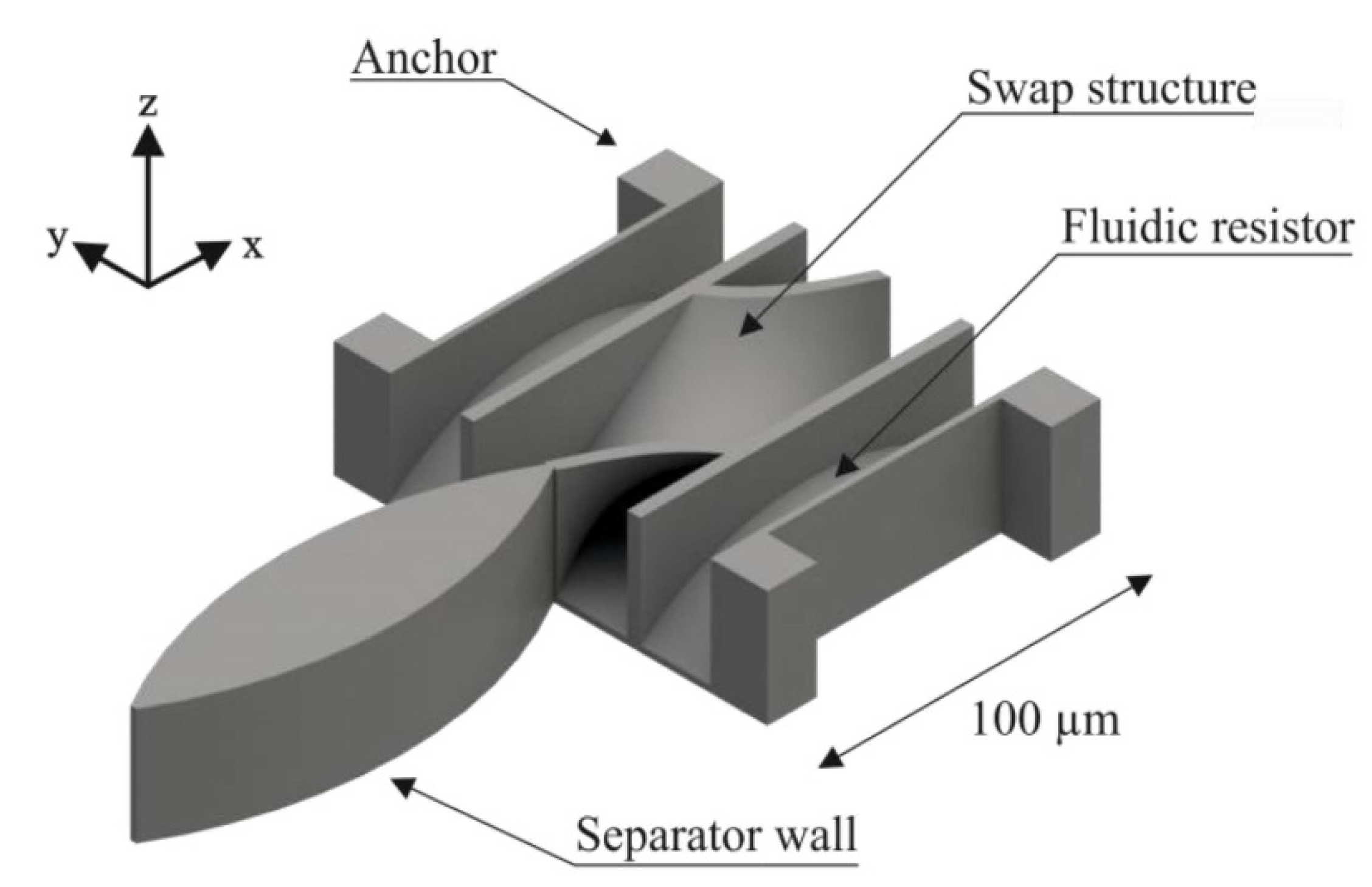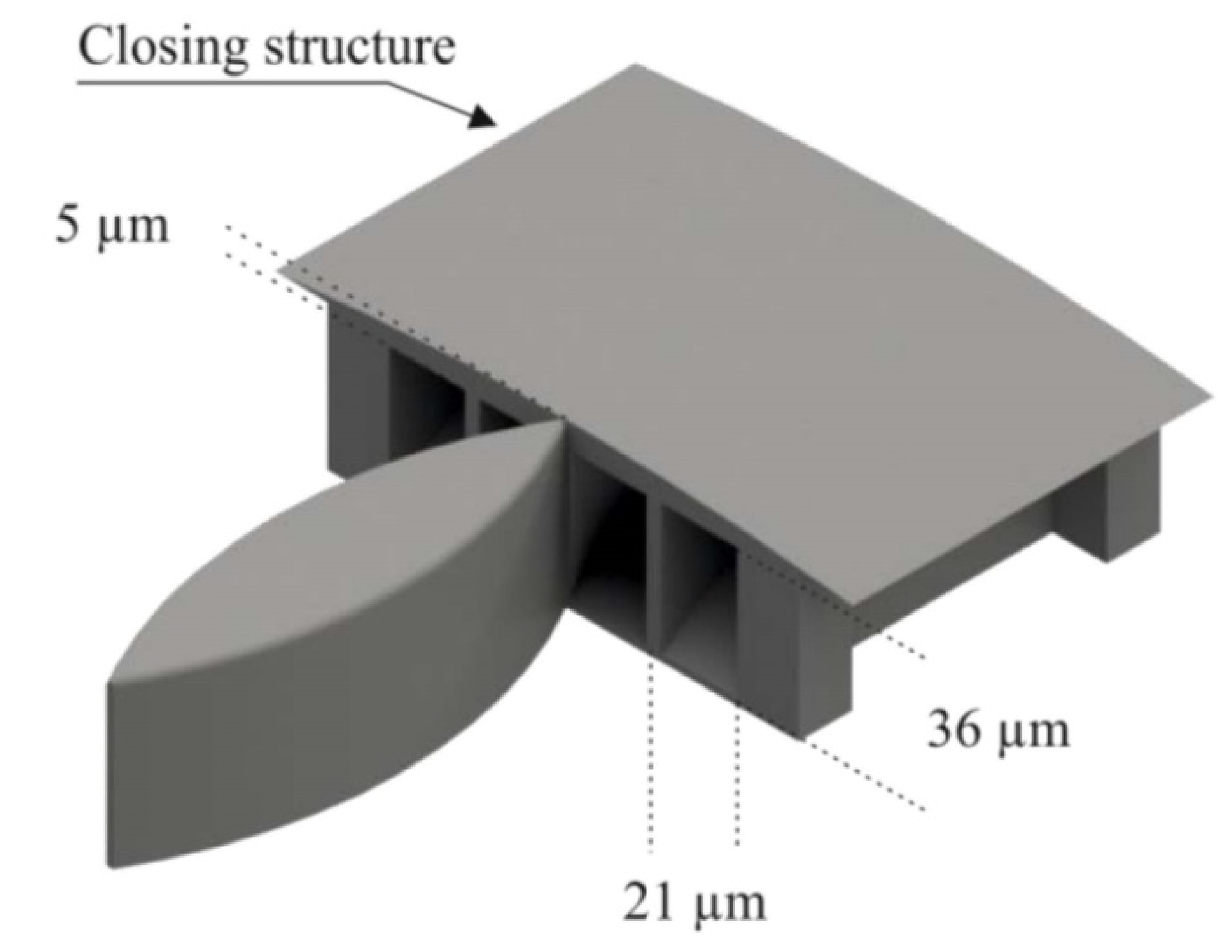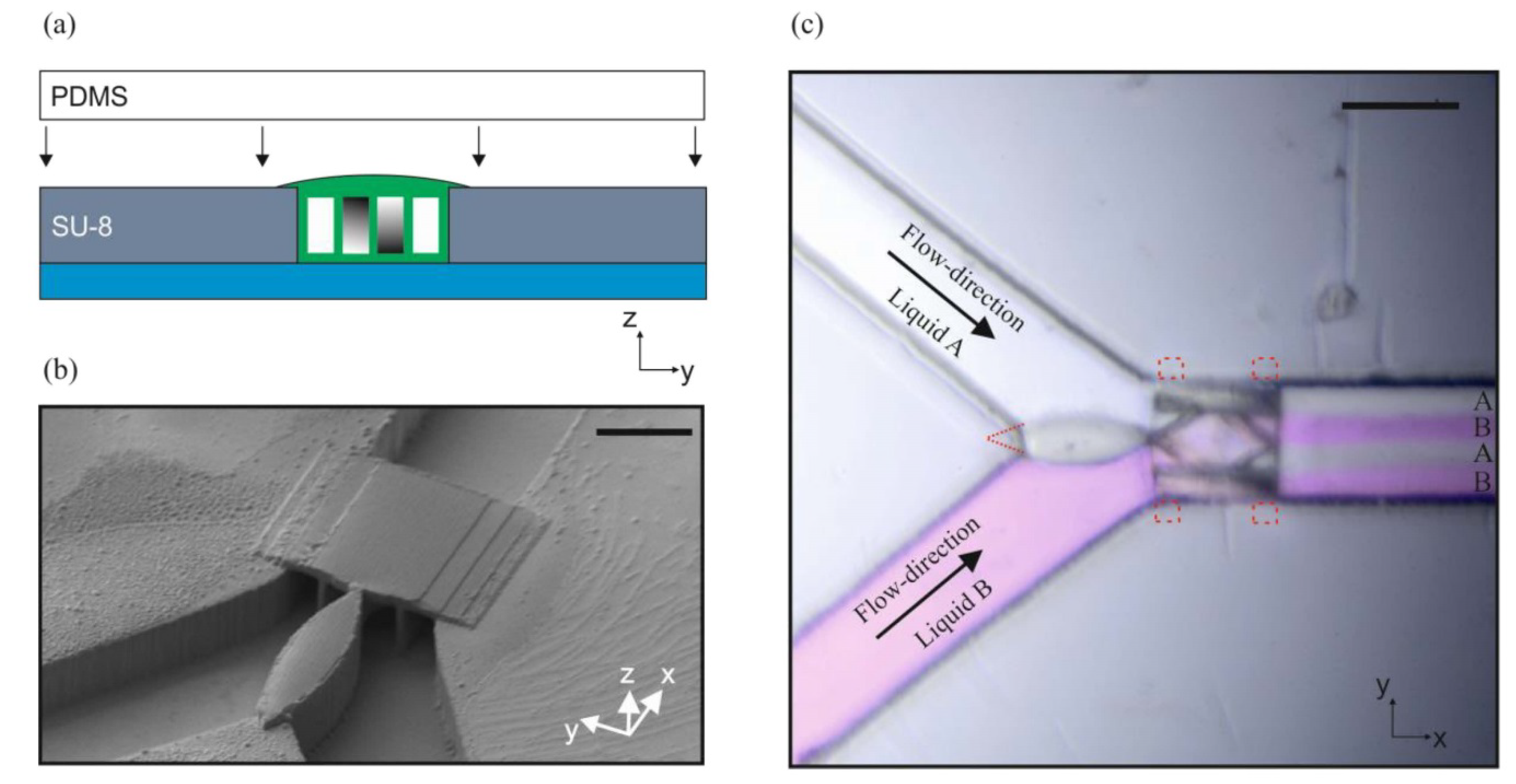Novel Design of Additively Manufactured Micromixer in a Microchannel Comprising Mounting and Sealing Elements †
Abstract
:1. Introduction
2. Design and Fabrication
3. Methods and Results
4. Conclusions
References
- Cai, G.; Xue, L.; Zhang, H.; Lin, J. A Review on Micromixers. Micromachines 2017, 8, 274. [Google Scholar] [CrossRef] [PubMed]
- Lee, C.-Y.; Wang, W.-T.; Liu, C.-C.; Fu, L.-M. Passive mixers in microfluidic systems: A review. Chem. Eng. J. 2016, 288, 146–160. [Google Scholar] [CrossRef]
- Wilson, D.; Mosenia, A.; Suprenant, M.P.; Upadhya, R.; Routkevitch, D.; Meyer, R.A; Quinones-Hinojosa, A.; Green, J.J. Continuous Microfluidic Assembly of Biodegradable Poly (beta-amino ester)/DNA Nanoparticles for Enhanced Gene Delivery. Available online: http://onlinelibrary.wiley.com/doi/10.1002/jbm.a.36033/full (accessed on 14 February 2018).
- Lin, C.-L.; Liu, Y.-J.; Lin, Z.-D.; Wu, B.-L.; Lee, Y.-H.; Shin, C.-S.; Baldeck, P.L. Laser Direct Writing 3D Structures for Microfluidic Channels: Flow Meter and Mixer; Gray, B.L., Becker, H., Eds.; International Society for Optics and Photonics: Washington, DC, USA, 2015; p. 93200H. [Google Scholar] [CrossRef]
- Lim, T.W.; Son, Y.; Jeong, Y.J.; Yang, D.-Y.; Kong, H.-J.; Lee, K.-S.; Kim, D.-P. Three-dimensionally crossing manifold micro-mixer for fast mixing in a short channel length. Lab Chip 2011, 11, 100–103. [Google Scholar] [CrossRef] [PubMed]
- Buchegger, W.; Wagner, C.; Svasek, P.; Lendl, B.; Kraft, M.; Vellekoop, M.J. Fabrication and characterization of a vertical lamination micromixer for mid-IR spectroscopy. Sens. Actuators B Chem. 2011, 159, 336–341. [Google Scholar] [CrossRef]
- Maruo, S.; Nakamura, O.; Kawata, S. Three-dimensional microfabrication with two-photon-absorbed photopolymerization. Opt. Lett. 1997, 22, 132. [Google Scholar] [CrossRef] [PubMed]
- Oellers, M.; Bunge, F.; Lucklum, F.; Vinayaka, P.P.; Habben, C.; Kirsch, M.; van den Driesche, S.; Vellekoop, M.J. Microfluidic swap structure to enhance on-chip liquid mixing. In Proceedings of the 2017 IEEE SENSORS, Glasgow, UK, 29 October–1 November 2017; pp. 1–3. [Google Scholar] [CrossRef]



Publisher’s Note: MDPI stays neutral with regard to jurisdictional claims in published maps and institutional affiliations. |
© 2018 by the authors. Licensee MDPI, Basel, Switzerland. This article is an open access article distributed under the terms and conditions of the Creative Commons Attribution (CC BY) license (https://creativecommons.org/licenses/by/4.0/).
Share and Cite
Oellers, M.; Bunge, F.; Lucklum, F.; Driesche, S.v.d.; Vellekoop, M.J. Novel Design of Additively Manufactured Micromixer in a Microchannel Comprising Mounting and Sealing Elements. Proceedings 2018, 2, 1000. https://doi.org/10.3390/proceedings2131000
Oellers M, Bunge F, Lucklum F, Driesche Svd, Vellekoop MJ. Novel Design of Additively Manufactured Micromixer in a Microchannel Comprising Mounting and Sealing Elements. Proceedings. 2018; 2(13):1000. https://doi.org/10.3390/proceedings2131000
Chicago/Turabian StyleOellers, Martin, Frank Bunge, Frieder Lucklum, Sander van den Driesche, and Michael J. Vellekoop. 2018. "Novel Design of Additively Manufactured Micromixer in a Microchannel Comprising Mounting and Sealing Elements" Proceedings 2, no. 13: 1000. https://doi.org/10.3390/proceedings2131000
APA StyleOellers, M., Bunge, F., Lucklum, F., Driesche, S. v. d., & Vellekoop, M. J. (2018). Novel Design of Additively Manufactured Micromixer in a Microchannel Comprising Mounting and Sealing Elements. Proceedings, 2(13), 1000. https://doi.org/10.3390/proceedings2131000



